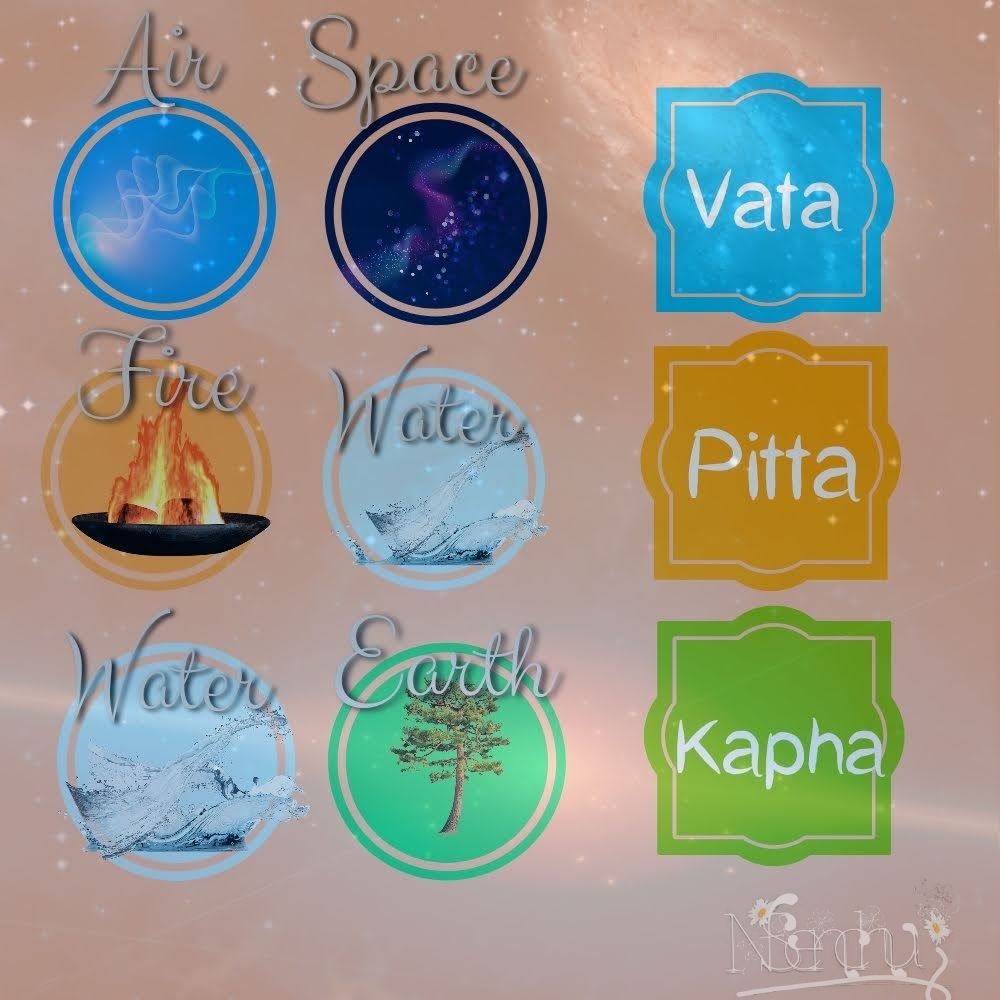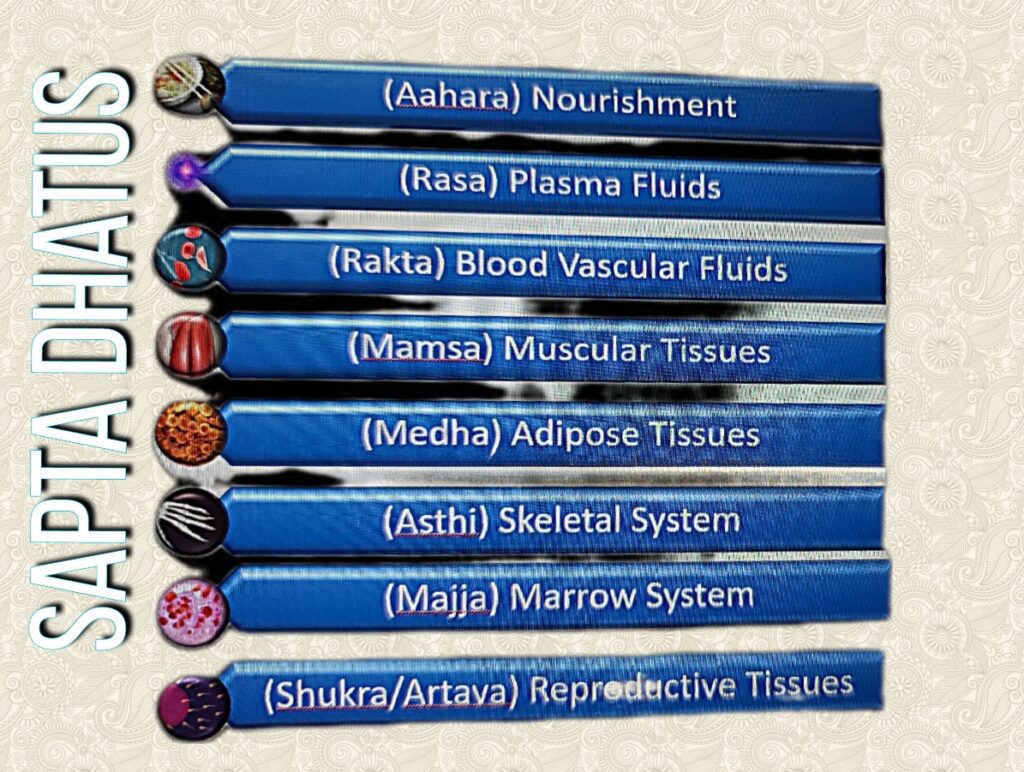Ayurveda is an ancient Indian medical system based on age-old writings that rely on a natural and holistic approach to physical and emotional health and longevity via preventative and curative means. Despite the term Ayurveda being a common expression, it is originally derived from Sanskrit, where Ayus means life and lifespan and Veda means knowledge or science, so it’s the Science or Knowledge of Life.
Genesis 1:29:” And God said, Behold, I have given you every herb bearing seed, which is upon the face of all the earth, and every tree, in the which is the fruit of a tree yielding seed: to you it shall be food.”
Ayurveda or Siddha is holistic healing using natural herbs that God created for enriching our body, mind, and soul. To me this knowledge is unbound by any specific religion and I wholeheartedly offer credit to this herbal wisdom to my Creator and Sustainer.
This ancient wisdom has been recognized by WHO as the earth’s oldest comprehensive healthcare system, indigenous and exclusive to India, where it is predominantly practiced. Its also devoid of side effects, offering lucrative results to major health issues plaguing humanity.
Some of this knowledge was set to print a few thousand years ago, but much of it is inaccessible. The principles of many of the natural healing systems now familiar in the West have their roots in Ayurveda, including Homeopathy and Polarity Therapy.
According to Dr. Vasant Lad, a famous Ayurvedic physician, “Ayurveda is a medical, metaphysical healing form of life science”. It guidelines how a healthy person can retain their vigor and strength while ailing person can restore their health and vitality. It is possible to achieve this by adhering to a regular daily routine (Dinacharya) and a seasonal routine (Ritucharya). Ayurveda outlines following daily self-care, a healthy diet, exercise, and a lifestyle aligned with nature for optimal health.
Basic Elements and Principles
5 Basic elements of Ayurveda are Space, Air, Fire, Water, and Earth; these manifest in our bodies as three dominant energies. (Pancha Tatva)
Space + Air -> Vata: a subtle energy that is associated with movement in the body, like circulation, breathing, heartbeat, and catabolic processes, amongst many others. When vata energy is in balance, creativity, and vitality ensue, and its disarray causes fear and anxiety. It maintains cellular transport, electrolyte balance, and waste elimination, and its effect is increased by dryness.
Fire + Water -> Pitta: energy that controls metabolic processes like digestion, assimilation, body temperature, optic nerve coordination, nutrition, just to name a few. When pitta energy is in balance, it leads to contentment and intelligence; when in disarray, it induces anger, and its effect is intolerance to external heat.
Water + Earth -> Kapha: energy that controls growth, moisturizes skin, maintains the immune system, and anabolic processes many more. When Kapha is in balance, it is expressed as love and forgiveness; when out of balance, it creates insecurity and envy.

Our primary constitution is determined at conception and is called Prakruti. The word Prakruti is made up of the prefix ‘Pra’ which means “origin”; ‘Kri’ means “to do” and ‘Ti’ means “to intensify”.
Thus, Prakruti is defined as the entity that manifests at the time of origin, which means the original creation of the balanced state. It comprises unique ratios of Vata, Pitta, and Kapha; the percentage of these three doshas within us is the framework for body type, personality, life values, and physiological and psychological tendencies that are stable factors.
Many factors trigger the imbalance, like stress, drinking, eating and sleeping at the wrong times, incorrect diet, weather, etc. These disturbances in a deviated state are called Vikruti, a form of relative imbalance due to external influences and lifestyle choices we make.
This deviation is not static as it varies every hour, day to day, season to season, and in different stages of life. A constant variation in our body, mind, and soul fluctuates the five elements, altering the 3 aspects from minute to minute. Hence, its difficult for anyone to keep them in harmony and balance.
Ayurveda also believes that the human body consists of Seven tissues (Saptadhatus) that coordinate with each other for proper functioning.

Body fluids (Rasa); Blood circulatory system (Rakta); Muscular system (Mamsa); Fat and connective tissues (Medha); Skeletal system (Asthi); Marrow and their functioning (Majja) and Reproductive system (Shukra and Artava).
There are also three types of elimination processes (malas): Urine, Feaces, and Sweat. When these wastes are improperly eliminated, complications like diarrhea, constipation, asthma, arthritis, UTIs, gastritis, skin rashes, and fluid imbalances.
Our metabolism is active and functioning through the fire (Agni); there are thirteen types of Agni, and the most crucial one is digestive fire (Jatharagni), which maintains microflora and digestive functions and supplies energy.
Ayurveda is a complementary healing system, whereas Western allopathic medicine focuses on treating symptoms and diseases with drugs that often have harmful side effects.
The Ayurvedic approach doesn’t solely focus on treating specific conditions. Instead, it promotes the idea of maintaining a balance of energy within the body to support overall well-being. When stress is minimized and energy flows effectively, the body’s natural defense mechanisms become more robust and better equipped to fight against illnesses.
It’s important to note that Ayurveda should not be seen as a replacement for Western medicine, especially in cases where drugs or surgery are necessary to address acute conditions. However, Ayurveda can be used in conjunction with Western medicine to enhance a person’s overall health, prevent future illnesses, and aid in recovery after medical treatments.
The practitioner evaluates critical signs and symptoms, focusing on the source of imbalance, and considers the patient’s suitability for diverse treatments.
The practitioner diagnoses by asking questions, observing the patient, conducting a physical exam, and inferring. They also continue their assessment by taking the patient’s pulse, examining their tongue, eyes, and other biological cues, and listening to the tone of their voice.
To address imbalances, it can be helpful to take pacifying and cleansing measures and manage the underlying causes. This may involve making lifestyle changes, following a recommended diet, and incorporating herbs.
Ayurveda uses panchakarma to detoxify the body and enhance treatment effectiveness. It recognizes the uniqueness of each person and provides valuable insight into the relationships between causes and their effects.
Maintaining harmony is crucial, as any imbalance can lead to significant disruptions. Health and order go hand in hand, while illness brings about disorder and chaos. The body is in a constant state of interplay between control and discord, and it is essential to comprehend the nature and structure of any imbalance to achieve balance.
When the diet is incorrect, medicine is ineffective; when the diet is correct, medicine is unnecessary.
Ancient Ayurvedic Proverb

